13 simple steps on how to reduce zero waste
Updated Oct. 9, 2021 | Written by Gargie

Reducing your carbon footprint is not as hard as it sounds. All it needs is a little bit of thought and a great amount of consciousness. If you want to reduce wastage, you do not have to start living a Spartan life.
You can live healthy and see the world around you change for the better. It seems interesting, right! Take, for instance, your kitchen waste; instead of throwing it away, why don't you start composting?
It is one of the simplest ways of reusing, recycling and building something new. You can always start small and find the plants in your garden flourish with the help of your kitchen waste. Composting can provide the plants in your garden with all the necessary nutrients most organically and naturally possible. You will be reducing wastage and decreasing your dependence on chemical fertilizers. You will see a marked change in the growth of your plants and their capacity to produce blooms. So next time, instead of throwing away your coffee grounds, use them as compost and fertilizer for your plants.
There are several other ways that you can reduce wastage and decrease your carbon footprint. Some of these are as follows:
1. Start with your kitchen
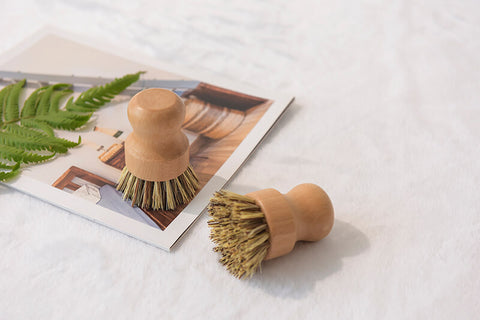
The first place you should start your journey of 'how to zero waste’ is your kitchen. If you look around your kitchen, you will find several products to convert into zero-waste products.
For example, you can be more continuous and careful about the dishwashing brush that you use in your kitchen. The natural tendency is to purchase sponge brushes or brushes with nylon bristles. But these brushes are non-biodegradable and cannot be up-cycled. However, biodegradable kitchen brushes are made of wood, and the bristles are made of eco-friendly fibers. These brushes can be disposed of quickly, and they do not cause any harm to the environment. You can burn off the bristles if you want to, and you can separate the handles. The handles can be up-cycled, and you can reuse these as they are made of wood and they last for a long time.
Finally, you can always dispose of the entire kitchen brush without feeling guilty, as these will decompose without releasing any toxic fumes. Sponges not only increase the wastage of water but also do not decompose. Usually, these sponges are made from synthetic materials which you cannot recycle. Hence, you will have to dispose of these in the garbage, ending in the landfills and leading to more pollution. You can reduce your carbon footprint by purchasing some of the following eco-friendly kitchen brushes.
2. Using eco-friendly products in your bathroom
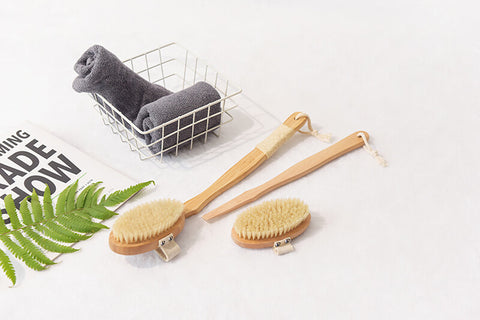
Just like your kitchen, you must be using brushes and scrubbers in your bathroom. Shower brushes and brushes to scrub your feet can easily be made of eco-friendly material.
You can choose shower brushes made of coir with wooden handles. Not only do these look elegant but they last longer than any nylon back scrubbers. Plastic products are the most dangerous because they do not decompose. Which then ends up in a landfill when disposing of these items. These are also not long-lasting, and you will find that your foot scrubbers break easily, especially the handles.
As a result, you will have to throw these and purchase a new one. Not only are you increasing wastage by purchasing plastic brushes, but you are also increasing your carbon footprint. This is applicable for the shower brushes and the foot cleaning brushes that you use in the bathroom. When you switch to brushes made entirely of eco-friendly products and products that decompose quickly, you are preventing the earth from further environmental pollution.
Check out our Shower Brushes collection to give you a long lasting and smooth result.
3. Reduce the use of plastic

Another mistake that many homeowners make while making purchases is using plastic. If you want to do a zero-waste shop, the first thing you should try to incorporate is reducing plastic use completely.
Single-use plastic is one of the most dangerous pollutants and the product that always ends in landfills. It does not decompose and is a bane when it comes to reducing pollution. The next time when you step out to do your grocery shopping or any other shopping, carry a reusable cloth bag or eco-friendly totes. You will find that it not only reduces wastage, but it is extremely helpful.
Reusable cloth bags are more extensive than single-use plastic bags, which means you can purchase more products. These bags are elegant to look at, and fashionable even when you are out doing grocery shopping! Many celebrities and movie stars often are seen carrying eco-friendly reusable tote bags when they are out casually shopping.
We highly recommend you to start using reusable cloth bags whenever you go shopping as this will help reduce the demand for single-use plastic in the long run and help protect our planet.
4. Decorate your home with rattan baskets

If you plan to decorate your home with bowls and baskets, you can opt for rattan baskets instead of plastic and ceramic.You must have visited homes where you have seen a beautiful glass, ceramic or glass bowl filled with coloured pebbles.
Sometimes homeowners fill these bowls with coloured baubles or balls. If you decorate your home similarly, instead of using glass, ceramic or plastic bowls, you could use rattan bowls. You can put potpourri in the rattan baskets and fill the room with a lovely fragrance.
The primary reason why you should switch to rattan baskets is that if a ceramic or a glass bowl falls and breaks, you will have to dispose of all the broken parts. You cannot recycle or up-cycle the broken pieces. It unnecessarily increases wastage. But rattan baskets can be reused and recycled. You can repaint and decorate an old rattan basket to give it a completely new look.
Moreover, if you dispose of a rattan basket, you can be assured that these will decompose over time as they are biodegradable. Switching to rattan baskets to decorate your home instead of plastic, ceramic or glass bowls can reduce wastage. Try our Rattan Baskets to give your space an elegant, fresh and eco look.
5. Start purchasing food in bulk
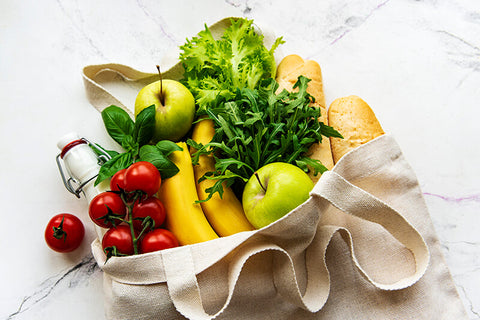
When you want to create a zero-waste home, one of the things that you should do is start purchasing things in bulk. It would be best if you did this, most notably with grocery products.
One of the reasons for this is when food items or other similar products are given to you, these are packed in single-use plastic packets. For example, think of your vegetables, bread and fruits. The best way to reduce the use of this plastic would be to purchase these products in bulk and store them at your home. Then you will not have to keep going to the store every other day, wrap a few vegetables in a plastic bag and bring these to your home.
Instead, you would have a large amount of the vegetables packed in a big plastic packet to store in your refrigerator. After that, all you need to do is take the requisite amount of vegetables as and when you require and start cooking. In addition, purchasing in bulk is also recommended to reduce fuel wastage. Every time you drive to the local store, you are wasting fuel and adding to environmental pollution. By purchasing things in bulk, you would be doing your bit for the planet by reducing the single-use of plastic and wastage of fuel.
6. Start using handkerchiefs
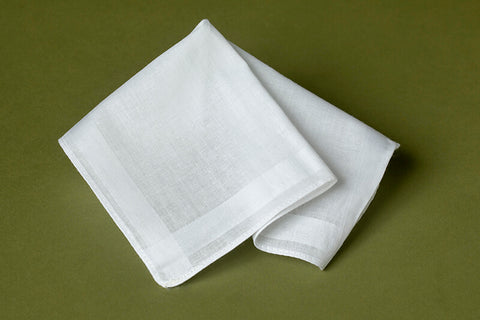
Another thing that experts often mention is that beginners who want to do their bit for the environment and want to reduce their wastage can start by using handkerchiefs.
Paper napkins are another product that is used randomly and without much thought. It is considered biodegradable, but in the long run, it is wasteful to use paper napkins for something that you can easily do with the help of handkerchiefs. Consider a scenario where you have to wash your hand, and you need to wipe it. Your natural tendency would be to use a napkin or a wet wipe. If you are using napkins, you will find that one napkin is not enough to dry your hands, and you might end up using two or more of these napkins. The same is applicable for wet wipes. Wet wipes are often made from synthetic products, and these end up in landfills. Hence, these create more pollution than you can imagine.
It is best to replace the paper napkins and wet wipes with handkerchiefs. You can use a simple cotton handkerchief to wipe your hands dry, and you can easily wash and dry your handkerchief when you come back home. This will help reduce wastage and your carbon footprint.
7. Switch to mason jars
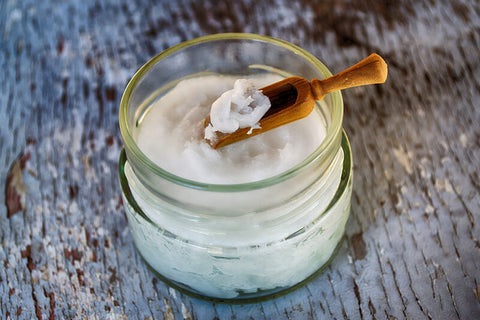
It is a good idea to replace the plastic jars in your kitchen with mason jars and glass storage jars. You will find that your food stays better in these jars, and they are all dishwasher safe. Moreover, glass is a non-reactive material. Unlike plastic, it does not react with the chemicals found in food. Hence, if you store items like pickles, jams and spreads in mason jars, these will remain intact, and the flavour and consistency of the products will not change. In the case of plastic pots, the chemicals in the food can react with the plastic, and the innate quality of the product stored can change.
When you dispose of the plastic jar, they will always end in landfills. There is no way to recycle, reuse or up-cycle plastic pots that have been used to store jams, pickles or spreads. One of the significant reasons you should start using mason jars is that you can easily recycle or up-cycle these. If you find you can no longer use one of the mason jars in your kitchen or storage of food, then you can easily convert these into unique showpieces, like bedside lamps, lava lamps and potpourri holders. If you search online, you will find several such options that teach you how to convert old mason jars into unique showpieces.
8. Use stainless steel water bottle
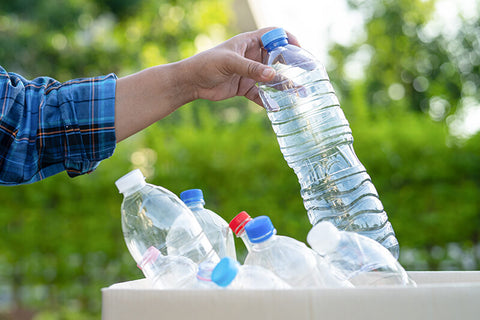
Whenever you step out of your home, it is a good idea to carry a water bottle. This way, you do not have to keep purchasing a plastic water bottle whenever you feel thirsty or on the go.
Research shows that water bottles are one of the leading causes of pollution because, like single-use plastic, there is no way to decompose these bottles. Water bottles are all made of plastic, and these cannot be recycled or reused. As a beginner looking for ways to reduce wastage, one of the easiest ways would be to carry a water bottle whenever you step out of your home.
This way, you will decrease the purchase of plastic bottles, and in the long run, it will help reduce pollution. If you carry a stainless-steel water bottle and finish the water, you don't need to purchase a new bottle of water. All you need to do is get a refill. Carrying a water bottle can prove to be helpful and reduce the number of plastic bottles ending in landfills.
9. Purchase a lunchbox
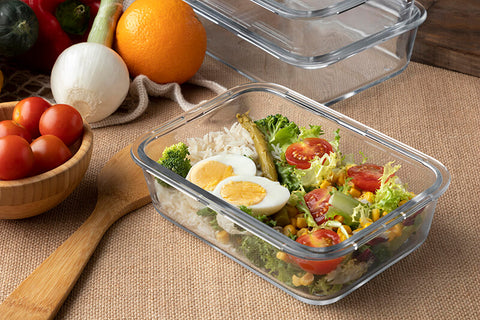
If you are in the habit of purchasing the odd sandwich or salad on your way to work, then instead of opting for the plastic boxes and the fork and spoon, they give you take a lunchbox with you. The ideal situation would be to get the lunch ready at home before moving out of the house. But if you are unable to give time to prepare your lunch, then talk to your favourite sandwich shop or salad bar about packing the food in your lunch box. On your way to work, stop at the store and give your lunchbox to them, in which they will fill your food in it.
This way, you will reduce the use of plastic boxes, forks and spoons. Research shows that disposable lunch boxes, forks, and spoons result in nearly one hundred pounds of trash generated every year per person. All of this trash ends up in local landfills and causes significant pollution.
If you want to contribute to green living and reduce your carbon footprint, then one of the ways would be to reduce the use of plastic lunch boxes. You could even enquire which sandwich stores and salad bars in your locality will pack the food in lunchboxes. This can significantly reduce the use of plastic and even help restaurants become conscious about using Styrofoam and plastic.
10. Start cooking small meals

When you start on your journey of ‘how to zero waste', it has to include learning how to cook. If you are in the habit of ordering food or eating fast food, you should slowly start getting out of the practice. These food items always use plastic or paper wrappings that cause environmental pollution. Even the tiny ketchup packets that are served with your fast food are dangerous for the environment. These are made of plastic, which does not decompose, and these wrappers will end in landfills, causing pollution.
Moreover, the plastic spoons and forks provided with these foods are environmentally unsafe and never decompose. To prevent using these products, you should start eating healthy and begin cooking at home. Of course, this will help reduce pollution, but you will find that it has tremendous health benefits. As a beginner, you can start by cooking small meals, and you will find that it will be helpful.
11. Use a soap bar
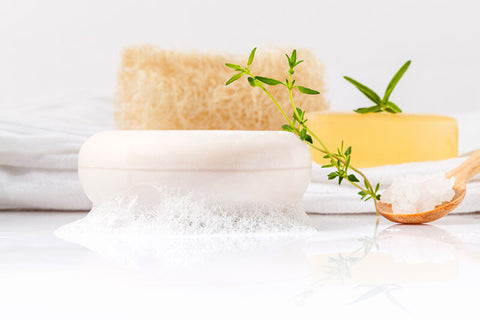
In the bathroom, consider replacing your liquid soap bottle with a bar of soap. If you feel that the soap bar can become moist and squishy after multiple usages, you can put it in a soap net or mesh. This way, you will prevent the soap from becoming gooey and unusable.
But the primary reason that you should consider replacing the liquid soap bottles in your bathroom with soap bars is that the bottles are usually made of plastic. No matter how attractive these bottles look over a period, they tend to become dull and unattractive. Then you will have no option but to replace the soap bottles. These have to be disposed of when you replace the bottles because you cannot reuse or recycle used liquid soap bottles. As these are made of plastic, like other plastic products, these too will end in landfills as plastic does not decompose. The best way to reduce the use of plastic would be to replace the plastic liquid soap bottles in your home with soap bars. You could put these soaps in soap nets and then in attractive metal soap cases to keep your bathroom looking clean and pleasant.
12. Start using cotton towels in your kitchen
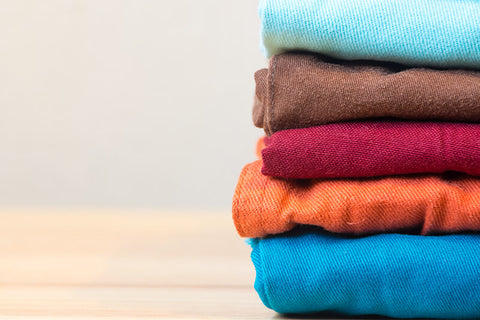
If you are in the habit of using kitchen towels or paper towels to clean the kitchen countertops, then you should start using cotton towels. Kitchen towels are often made of paper or synthetic fibers. These are designed for single use. This means you will have to dispose of the towel once you have cleaned the countertop. This can prove to be quite wasteful. If the spill is quite significant, then you will be using more than one of these towels. However, if you use cotton towels, you can wipe the countertop clean with a single towel. After that, you can wash the towel in the kitchen sink, squeeze it dry and wipe the countertop as many times as you want till it is sufficiently clean. A cotton towel is not a single-use towel, and you do not have to dispose of it. Once you have finished cleaning the countertop, all you have to do is wash the towel or towels in the washing machine. The entire process not only reduces wastage but is also cost-effective. You can start using these again when the cotton towels are washed and dry, unlike the regular kitchen towels. Switching to cotton towels in the kitchen can reduce wastage and reduce your carbon footprint.
13. Consider going paperless with your bills

With everything going online, one of the best ways for reducing wastage would be to opt for paperless bills. Instead of having your bills sent by post, have the electricity, telephone, and all other companies you regularly pay to send you the bills online. This way, you will reduce the use of paper and the unnecessary cutting down of trees to manufacture paper. For beginners looking for the simplest ways to reduce wastage, this is one of the easiest ways to reduce your carbon footprint. Start by having these companies send you the bills online to your email. You can easily view these bills from your mobile devices or your laptop and even pay the bill through the companies' links. This entire process simplifies the payment of bills and even reduces wastage. The most crucial factor is going paperless will save the environment in the future, and to your best ability you will be able to reduce zero waste.
Reducing wastage is not complex, and all you need to do is think about the process a bit. First, you need to check what the items you need and the products you can do without. An essential step towards reducing wastage is not purchasing products that you don't need. But when you do purchase, you should check if there are environmentally friendly alternatives available in the market. Your objective should be to purchase eco-friendly options for the products as these will help you reduce wastage and prevent further damage to the environment. As a beginner, you can do small things like reducing the use of plastic and becoming conscious about your food. These simple steps can help you reduce wastage, and you will find you have achieved your objective of creating a zero-waste home.
Always remember small steps lead to big changes.

